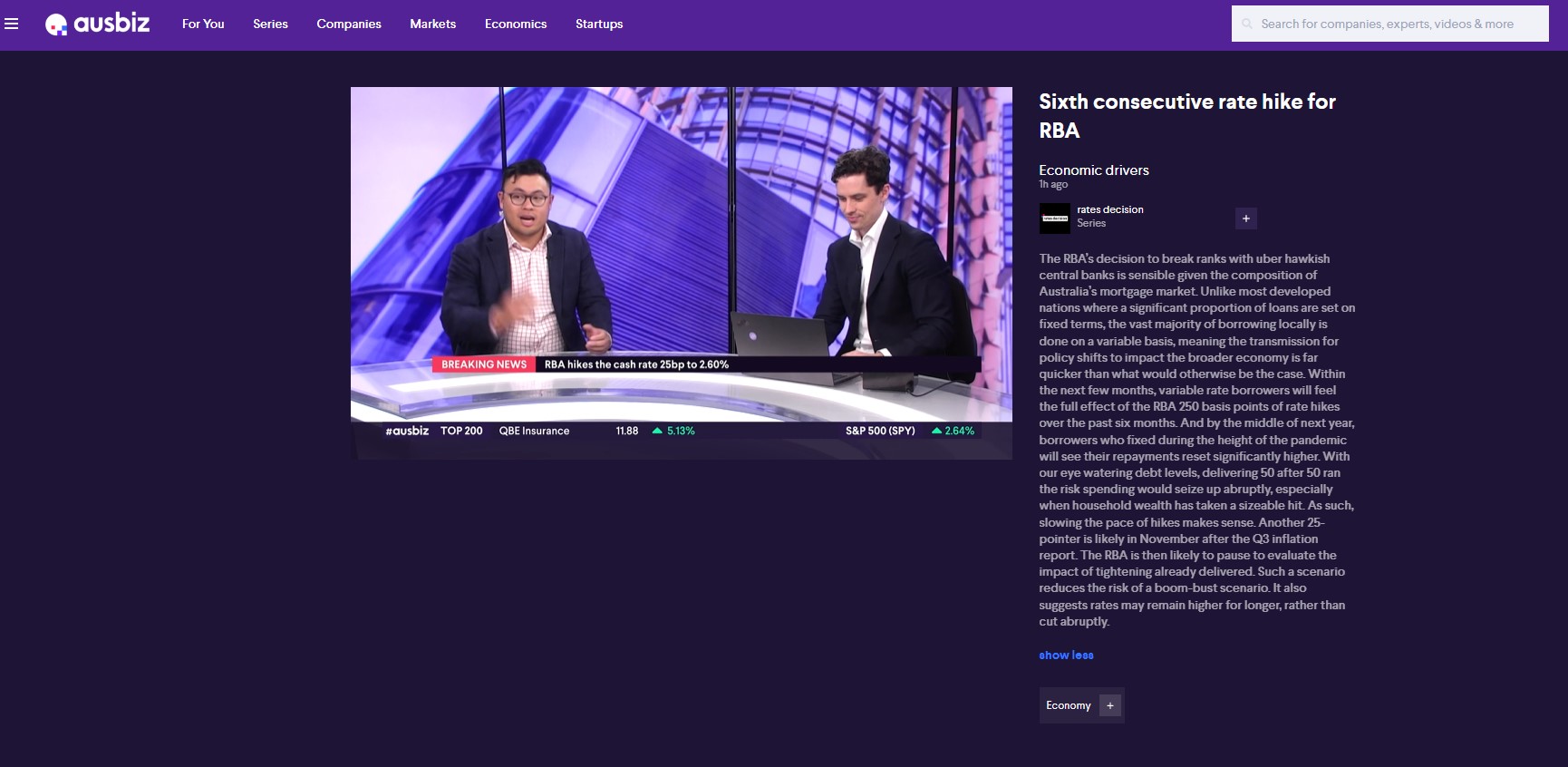Sixth consecutive rate hike for RBA
Economic drivers
The RBA’s decision to break ranks with uber hawkish central banks is sensible given the composition of Australia’s mortgage market. Unlike most developed nations where a significant proportion of loans are set on fixed terms, the vast majority of borrowing locally is done on a variable basis, meaning the transmission for policy shifts to impact the broader economy is far quicker than what would otherwise be the case. Within the next few months, variable rate borrowers will feel the full effect of the RBA 250 basis points of rate hikes over the past six months. And by the middle of next year, borrowers who fixed during the height of the pandemic will see their repayments reset significantly higher. With our eye watering debt levels, delivering 50 after 50 ran the risk spending would seize up abruptly, especially when household wealth has taken a sizeable hit. As such, slowing the pace of hikes makes sense. Another 25-pointer is likely in November after the Q3 inflation report. The RBA is then likely to pause to evaluate the impact of tightening already delivered. Such a scenario reduces the risk of a boom-bust scenario. It also suggests rates may remain higher for longer, rather than cut abruptly.

Watch the full interview here